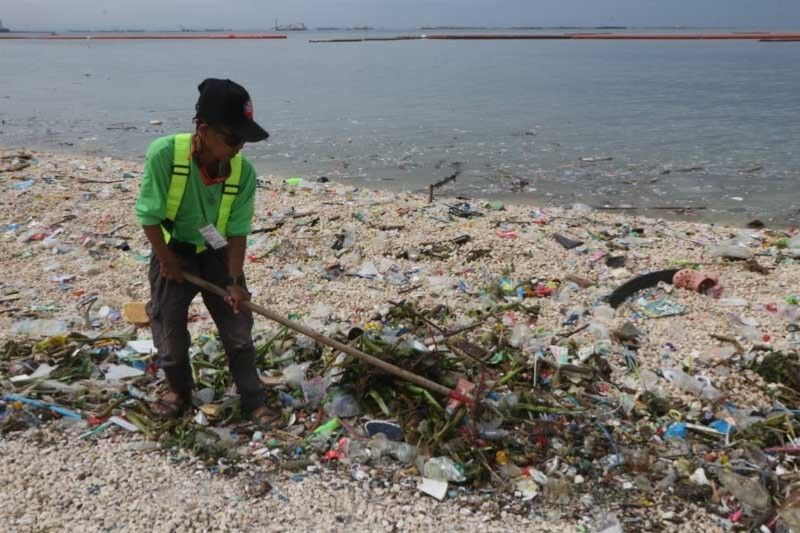'Karding' to push inflation and rice prices up, crimp economy's growth

MANILA, Philippines — The prices of consumer goods and services are now widely expected to accelerate after typhoon ‘Karding’ flattened swathes of agricultural land in Luzon on the advent of harvest season.
Sought for comment, Domini Velasquez, chief economist at China Banking Corp., said Karding’s impact will be felt in rice prices. As it is, the typhoon’s trail of destruction passed through Central Luzon, oft-considered as the country’s rice granary.
“Karding will likely drive inflation up towards the end of the year as it hit palay-growing provinces before the start of harvest season. The most recent development exacerbates upward risk on rice prices given lower than expected yield due to higher fertilizer prices at the first half of the year and external price pressures as India banned some its rice exports,” she said in a Viber message.
Initial estimates from the Department of Agriculture on Monday peg the damage to agriculture at P141.38 million, leaving vast amounts of rice, corn and other high-value crops nearly unusable. The amount, gleaned from reports from Cordillera Administrative Region, Ilocos Region, Central Luzon and Calabarzon, is still subject to validation according to the national government.
“Although the super typhoon affected a large part of the Philippines, especially the agriculture sector, we think that this will have less of an impact on overall national gross domestic product compared to the consumption drag of persistently elevated inflation” Velasquez added.
President Bongbong Marcos Jr. conducts aerial inspection of the areas affected by Super Typhoon #KardingPH.
— Philstar.com (@PhilstarNews) September 26, 2022
???? Bongbong Marcospic.twitter.com/zJVbvXv6Ef
Latest inflation slightly eased to 6.3% in August, amid lower oil prices. Despite that, the Bangko Sentral ng Pilipinas expects inflation to peak this month or in October.
Historically, agriculture has contributed about a tenth of GDP and employed about a quarter of Filipino workers, but advancements in other economic sectors had left behind the farm industry that the Duterte administration struggled to revive. Pres. Ferdinand Marcos Jr. appointed himself DA chief at the start of his term.
The Marcos Jr. administration is projecting the economy to grow 6.5-7.5% this year amid external headwinds that could slow down economic recovery. The Philippine economy grew 7.4% in the second quarter as quickening inflation dampened growth. Growth averaged 7.8% year-on-year in the first six months of the year.
Data broken down showed Karding’s impact affected 740 farmers, with volumes of production loss at 5,886 metric tons and 16,229 hectares of agricultural areas in Luzon.
Sonny Africa, executive director at nonprofit IBON Foundation, said this will worsen the country’s fragile economic recovery. The national government reopened the economy early in the second quarter to jumpstart recovery from the pandemic.
"This is especially because Central Luzon accounts for nearly 14% of the country's agricultural production including, as the top palay producer, some 20% of our rice," Africa said in a Viber message.
For context, high rice prices were among the culprits of 2018’s inflation surge. This was also the last time minimum wages around the country saw large adjustments. Africa noted that the Marcos Jr. administration should "reconsider" its stance on fiscal austerity to aid the domestic economy.
"With just around P10.4 billion in National Disaster Risk Reduction and Management Fund calamity funds left as of August 2022 and an austerity budget for 2023 that doesn't even keep up with inflation, the government should reconsider its dogmatic fiscal conservatism if it wants to do anything to avert the economic slowdown and support deteriorating household welfare," Africa added.
The Marcos Jr. administration inherited an economy saddled with a large national debt which left a narrow fiscal space for government projects and programs.
As it is, the Philippine Statistics Authority estimated agricultural damage, mostly from typhoons, cost the country an average of P25 billion annually from 2010-2019.
"Since the start of the year, the country, fortunately, has not experienced as many typhoons compared to previous years. However, the year is not yet over, and any additional typhoons might affect our growth outlook," Velasquez said.
- Latest
- Trending































